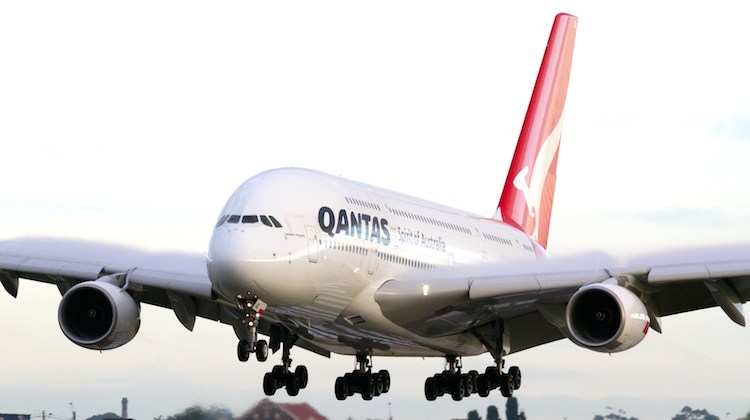 Qantas maintained its position as Australia’s largest international carrier in 2014, although the gap to foreign airlines such as Emirates and Qantas’s low-cost subsidiary Jetstar is narrowing.
Qantas maintained its position as Australia’s largest international carrier in 2014, although the gap to foreign airlines such as Emirates and Qantas’s low-cost subsidiary Jetstar is narrowing.
Figures from the Bureau of Transport, Infrastructure and Regional Economics (BITRE) show Qantas carried 15.4 per cent of the 33.1 million passengers that travelled into and out of Australia in calendar 2014.
The Flying Kangaroo’s international market share was down 1.6 percentage points from 17 per cent in 2013, as the airline in 2014 ended its Perth-Singapore service, used smaller aircraft on some routes and the handed over some trans-Tasman services to Jetstar as part of a broader cost-cutting drive.
In contrast to its parent, Jetstar’s expanded international flying in 2014 lifted the low-cost-carrier’s market share to 8.3 per cent, from 7.7 per cent the prior year.
The BITRE figures show Jetstar was the second largest Australian-designated international airline in 2014, ahead of Virgin Australia on 7.8 per cent and was now more than half the size of its parent Qantas in terms of passengers carried.
During 2014, Jetstar continued to replace Airbus A330-200 aircraft, which have 303 seats, with the larger capacity Boeing 787-8 that are configured with 335 seats on its long-haul international operations.
Among the overseas operators, Emirates market share of Australian international traffic rose to 9.7 per cent, from 9.3 per cent previously. The Dubai-based airline is this country’s largest foreign carrier by passengers carried and second only to its alliance partner Qantas in terms of market share.
In third spot was Singapore Airlines, whose market share fell 0.2 percentage points to 8.7 per cent in 2014 as it replaced some A380 services to Sydney and Melbourne with smaller aircraft.
Air NZ’s market share fell to 7.4 per cent in 2014, from 7.8 per cent the prior year.
There is some growth planned for or already introduced in 2015 at the Flying Kangaroo, particularly additional seasonal services to Vancouver, Hong Kong and Honolulu, as well as new flights such as Brisbane-Tokyo and increased frequencies to Los Angeles and Santiago.










